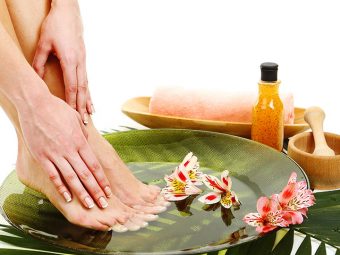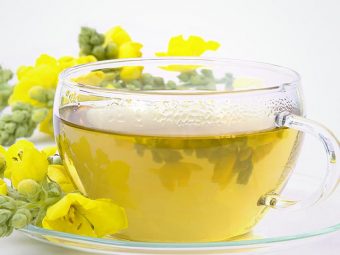Tips To Soothe Tired And Overworked Muscles

Staying home has brought many differences to our lifestyle. We tailored every outdoor activity into something that we can do at home with ease, and now we are all used to it. Some of these include working from home, increased tech usage to communicate, and even working out indoors rather than hitting the gym. It is also quite natural to become inactive and sit in front of the computer for long hours. Therefore, working out at home has become a part of many people’s morning or evening routines. If the workout routines get a little too intense at times, it can lead to searing muscle pains and lingering soreness. Let’s look at how you can calm tired and painful muscles through these simple yet effective methods.
1. Limited Stretching
Some people make the mistake of jumping straight into their specific exercises, leading to at least two or three days of muscle fatigue and pain. It can tug at the muscle tissues as they are not adequately warmed up, resulting in tears. This may take a while to heal. Make it a habit to stretch for at least 5-10 minutes before starting your workout. It helps maintain flexibility and reduces the possibility of cramps or muscle tears.
If exercises are not your cup of tea, take breaks in-between your work to stretch using the right techniques. Remember, the wrong posture can cause other joint or muscle injuries. If you are a beginner, begin with passive stretching which includes holding your position without pushing too much. Explore your boundaries with dynamic stretching which will help you start gradually and lets you test your limits with wider stretching postures.
2. Diet = Priority No. 1
Drink a lot of water. 7-8 glasses of water a day is mandatory. But if you are engaging in physical exercises like running and working out, you may need more. Staying hydrated will help lubricate muscle joints and also soothe inflammation.
When it comes to nutrient intake, Protein and Carbohydrates should be a priority. Foods like fish, lean meat, eggs, almonds, and milk are high protein sources. Proteins are instrumental in building, repairing, and strengthening muscles. Carbohydrates are converted into glycogen which gives muscle strength. Good sources are whole grains.
3. Use A Pain-Relieving Oil
At times, sore muscles can become unbearable, which hinders other important activities of the day. Many stick to popping painkillers for the body, joint, or any other ache in general. But in the long run, apart from causing side effects, it can also cause chronic cardiovascular diseases. This is when a good pain-relieving oil massage can come into play for that much-needed instant relief.
If you’re looking for quick pain relief, consider Kwik Pain Relief Oil. Nothing can beat the effectiveness of Ayurveda when it comes to relieving pain without side effects. Kwik Pain Relief Oil is purely herbal with ingredients like Mahanarayan taila, Vishgarbha taila, kapoor, capsicum, pudina, and more. Apart from curing muscle and joint pain, the long-term application can help keep any kind of body pain at bay, be it shoulders, neck, or back. Take 8-10 ml of Kwik oil and gently massage on the aching muscle or joint area. You can apply it once or twice a day to experience its benefits to the fullest. Lastly, cover the painful area with a steaming towel. You will be pleasantly surprised by the results.
4. Workout Breaks Are Crucial
If your exercises are high-intensity, do not overuse your muscles on a daily basis. Overdoing your workout sesh can lead to delayed muscle aches and put a lot of strain on your joints. Taking breaks is equally important during a workout. Spread it two to three times a week to let your muscles enjoy some breathing space in between. If you are an amateur fitness enthusiast starting out with basics, consult a trainer to know the amount of pressure or strain you should be putting while executing the different exercises, stretches, and positions. Too strong a pull, sudden jerks, or wrong positioning can cause a lot of damage to your muscles.
5. A Soothing Warm Bath
Already sounds like a dream, doesn’t it? Let us guide you through these stress-relieving bathing steps that will calm your muscles and joints into blissful relaxation.
- Specific salts and oils help recover from muscle pain as well as inflammation. Epsom salts, lavender oil, and rose oil help reduce the pain or swelling.
- Pick your desired salt or oil and pour it into the bathtub with lukewarm water. Choose a temperature of your choice, but avoid very hot, steaming water as it can harm your skin.
- Around 15-20 minutes are enough to soak in all the healing properties from the essential oils in your warm bath.
- Play some relaxing music while you’re at it for the full at-home spa experience. Don’t forget the scented candles too!
It will not only ease the tension in your muscles but also help stimulate the skin’s blood circulation.
In case of a serious muscle injury, use ice packs as much as possible until the swelling and the pain subsides. Icing for three days at least can help repair the injury to a great extent. Keep the affected part of the body, whether it is an arm or a leg, elevated. Consult a doctor if the pain and inflammation refuse to subside. All you need to do is take extra care and show special attention to your physical activities to have strong, painless muscles.






















